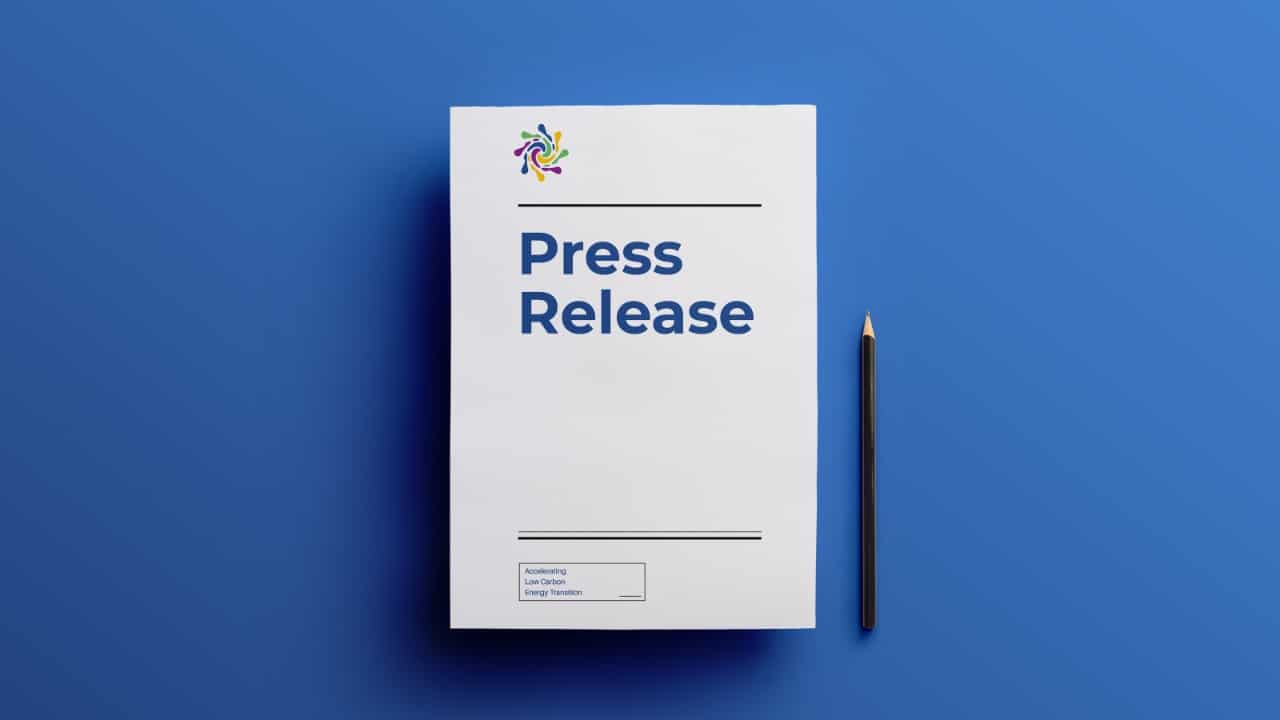Jakarta, Tuesday, September 28, 2020 – Institute for Essential Services Reform (IESR) launched one of five thematic study series on Indonesia’s energy transition roadmap entitled National Energy Plan (RUEN): Existing Plan, Current Policies Implication and Energy Transition Scenario. This study remodels the 2017 National Energy General Plan (RUEN) through three additional scenarios (realization scenario, strategic program, and energy transition) to evaluate and project the achievements of the initial RUEN targets based on the three developed scenarios. The energy transition to renewable energy systems has become a global phenomenon as a response to addressing the threat of climate change and reducing the risk of stranded assets.
In the current policy condition, RUEN 2017 has not adopted the energy transition vision, even though it has adopted a renewable energy target of 23% of the total energy mix by 2025. This target is correlated with the total installed capacity of renewable energy generators of 45.2 GW in 2025 from a total of 136 GW of capacity. power plants. Referring to one of the findings of this report, it is indicated that the target installed capacity of renewable energy of 45.2 GW in 2025 will not be achieved in the realization scenario with various decreases in the value of parameters and key assumptions that have occurred in the last five years. With economic and energy conditions and parameters that have changed since the 2017 RUEN was drafted five years ago, the IESR calls for a review and renewal of the RUEN, as a reference for mid-term and long-term national energy planning and development, in order to accommodate not only the progress and development of the energy transition. global, but also to anticipate various challenges and opportunities that arise in the transformation that is currently taking place.
The economics of renewable energy technologies and energy storage systems that keep getting cheaper every year can accelerate the energy transition efforts. In fact, the price of electricity generated from solar and wind energy on a large scale is able to compete with the price of electricity generation from coal. The digital revolution in the energy sector, the growing power of consumers to use electricity from clean energy, the rise of hybrid and electric vehicles, and the decentralization of energy generation are other driving factors in efforts to decarbonize this sector.
“For the Indonesian context, the transition to a sustainable clean energy system needs to be well prepared. The use of renewable energy, which has become a priority for the development and utilization of national energy in the National Energy Policy (KEN), has not been reflected in the achievement of RUEN until 2020. Apart from ambitious targets, several indicators and assumptions used to model energy supply and demand in RUEN were built based on data and information in 2015. In fact, in the last five years indicators and assumptions from socio-economic, techno-economic experiencing significant development, “said Fabby Tumiwa, Executive Director of IESR, in his opening remarks at the virtual launching of the study series on Indonesia’s energy transition road map study.
Referring to RUEN, in 2025 renewable energy is projected to increase from 7% to 23%, coal from 26% to 30%, and fuel oil to fall from 46% to 25%, and relative gas to fall to 22% from 23% in the previous year. the national primary energy mix. Based on this target, renewable energy power generation in 2025 will reach 45.2 GW with a composition of 20.9 GW from water, 7.2 GW from geothermal, 6.5 GW from solar, 5.5 GW from bioenergy, and 1.8 GW. from the wind power.
Fabby added, “by seeing the massive decarbonization trend occurring at the global and regional levels, IESR seeks to investigate the contextualization of the RUEN model, as a reference for medium and long term national energy planning and development, in order to accommodate not only progress and transition developments that have occurred,” but also to anticipate the various challenges and opportunities that arise in this transformation. “
The report writer, Agus Praditya Tampubolon, states that the target installed capacity of renewable energy of 45.2 GW in 2025 is indicated not to be achieved in the realization scenario with various decreases in the value of parameters and main assumptions that have occurred in the last five years. This is due to the realization of the low annual energy consumption growth rate and per capita electricity consumption as a result of low economic growth in the 2015-2019 period.
“RUEN which was established in 2017, uses real data from 2000 to 2015 as input and projects data from 2016-2050. Some of these projection data are overestimated, especially on economic and industrial growth and population demographics. This causes the projection of RUEN to be disproportionate, for example on primary energy consumption and electricity, including in generating capacity. So the realization scenario shows that renewable energy is only indicated to reach 22.62 GW in 2025. “
Agus also added that the city gas network, electric vehicles, and biodiesel launched by the government only contributed to the primary energy mix of around 3 percent (to 17.9%) of the new baseline in the realization scenario of 15% in 2025. Until 2050 too, the mixed renewable energy is projected at 40.3%, higher than the 31% target in the current RUEN model, but still has not started to take over the dominance of fossil energy by 59.7%. The mix and installed capacity of renewable energy will only increase significantly in an energy transition scenario, particularly from the time period when no new PLTUs are being built and all PLTUs over 30 years old are closed, with a projection of 408 GW by 2050.
In the report that was launched, there are at least three things that need to be done as recommendations. First, the parameters and assumptions of RUEN 2015-2050 need to be reviewed, especially in the assumption of economic growth, the rate of energy demand, and the economy of renewable energy. Second, a review also needs to be done on the plan to use coal and build a PLTU as a response to the decarbonization trend which has caused a decline in coal import demand from China, India, and South Korea. Third, the need to study the development of alternative scenarios in the national energy supply plan that integrates a larger portion of renewable energy.
Therefore, the IESR calls for a review and renewal of the RUEN, as a reference for medium and long-term national energy planning and development, in order to accommodate not only the progress and development of the global energy transition but also to anticipate the various challenges and opportunities that arise in the transformation. when this is happening.
Press contact:
Agus Praditya Tampubolon
Author/Energy Management Specialist, IESR | agus@iesr.or.id
Gandabhaskara Saputra
Communications Coordinator, IESR | 081235563224 | ganda@iesr.or.id



